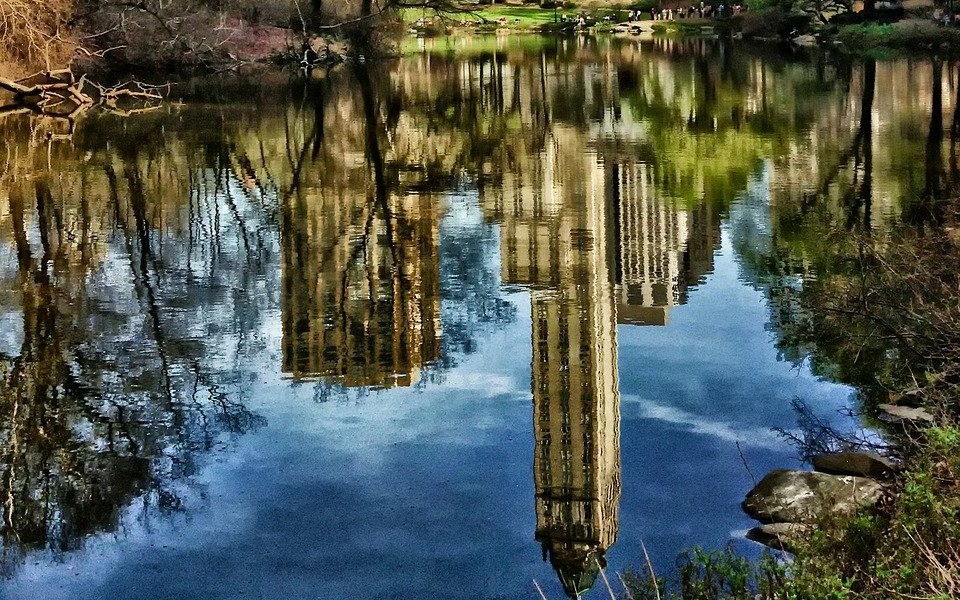Townscape
The term ‘townscape’ refers very broadly to the overall character and composition of a town (or other aspects of the built environment). It can include the range and quality of buildings in an area, the relationships between those buildings and the different types of space between and around them, and reflects the relationship between people and place.
The term 'cityscape' can be given a similar definition.
Townscape may be assessed as part of a townscape character assessment.
Townscape character refers to '...distinct, recognisable and consistent pattern of elements in the built environment that makes one landscape different from another, rather than better or worse.' Ref TIN 05/2017
Landscape Institute Technical Information Note TIN 05/2017 explains how to apply the principles and general approach of landscape character assessment to townscape character assessment. Ref https://landscapewpstorage01.blob.core.windows.net/www-landscapeinstitute-org/2018/04/tin-05-2017-townscape.pdf
The Technical Information Note suggests that: ‘The term townscape first came into popular use in the UK in the 1940’s and 1950’s, when there was a concern amongst some architectural critics that the identity of our villages, towns and cities was being eroded by poorly planned post-war reconstruction. They derived their definitions of townscape from the Roman “genius loci”, which translates as “the prevailing character or atmosphere of a place”.’
Townscape Character Areas (TCAs) are discrete geographical areas of a particular townscape type.
Townscape Character Types (TCTs) are generic, distinct townscape types that are relatively homogeneous in character. They may occur in different parts of the country, but share broadly similar combinations of geology, topography, drainage patterns, vegetation and historical land use and settlement pattern, and perceptual and aesthetic attributes.
NB High Speed Rail (Crewe – Manchester) Environmental Statement, Glossary, abbreviations and references, published by the Department for Transport in 2022, defines townscape as: ‘The landscape within the built-up area, including the buildings, the relationship between them, the different types of urban open spaces, including green spaces and the relationship between buildings and open spaces.’
[edit] Related articles on Designing Buildings
Featured articles and news
Commissioning Responsibilities Framework BG 88/2025
BSRIA guidance on establishing clear roles and responsibilities for commissioning tasks.
An architectural movement to love or hate.
Don’t take British stone for granted
It won’t survive on supplying the heritage sector alone.
The remarkable story of a Highland architect.
The Constructing Excellence Value Toolkit
Driving value-based decision making in construction.
Meet CIOB event in Northern Ireland
Inspiring the next generation of construction talent.
Reasons for using MVHR systems
6 reasons for a whole-house approach to ventilation.
Supplementary Planning Documents, a reminder
As used by the City of London to introduce a Retrofit first policy.
The what, how, why and when of deposit return schemes
Circular economy steps for plastic bottles and cans in England and Northern Ireland draws.
Join forces and share Building Safety knowledge in 2025
Why and how to contribute to the Building Safety Wiki.
Reporting on Payment Practices and Performance Regs
Approved amendment coming into effect 1 March 2025.
A new CIOB TIS on discharging CDM 2015 duties
Practical steps that can be undertaken in the Management of Contractors to discharge the relevant CDM 2015 duties.
Planning for homes by transport hubs
Next steps for infrastructure following the updated NPPF.
Access, history and Ty unnos.
The world’s first publicly funded civic park.
Exploring permitted development rights for change of use
Discussing lesser known classes M, N, P, PA and L.
CIOB Art of Building photo contest 2024 winners
Fresco School by Roman Robroek and Once Upon a Pass by Liam Man.

























Comments
[edit] To make a comment about this article, click 'Add a comment' above. Separate your comments from any existing comments by inserting a horizontal line.